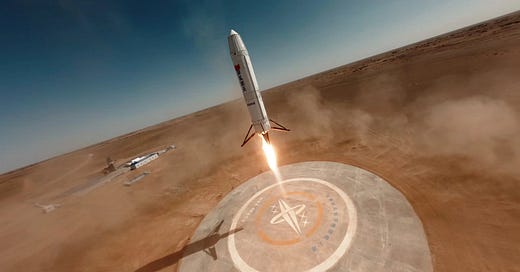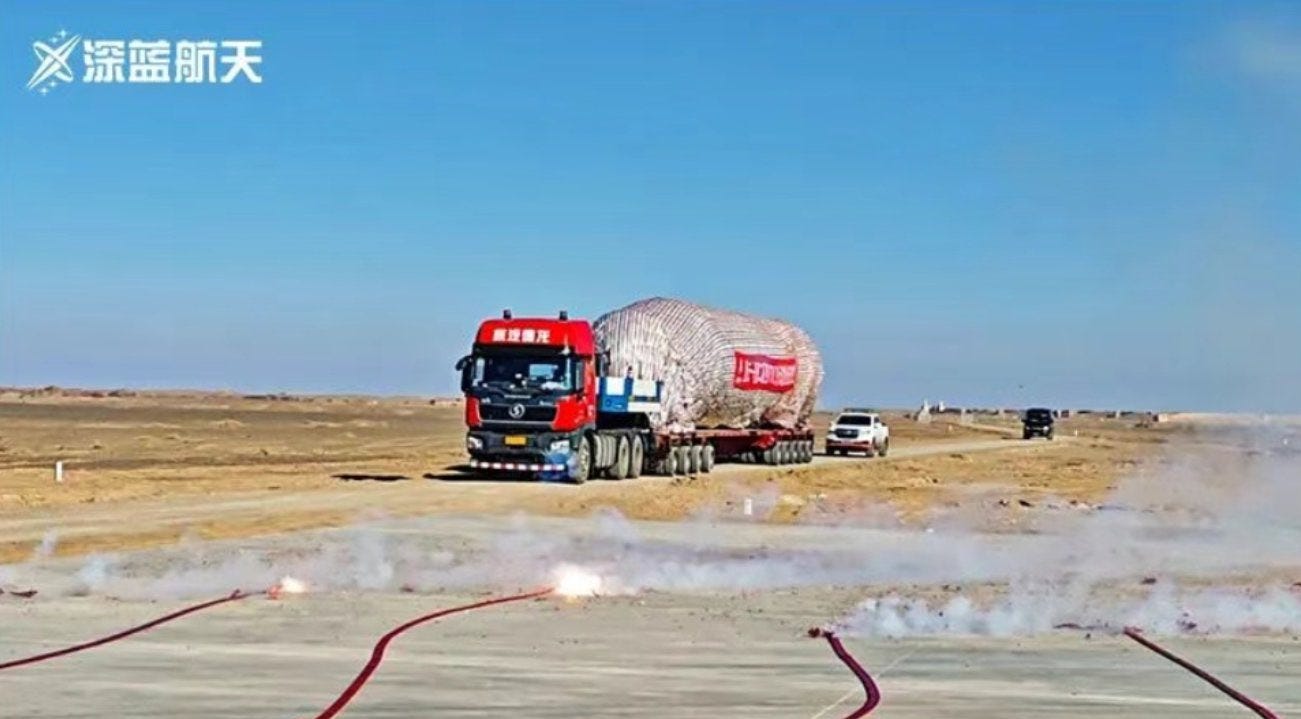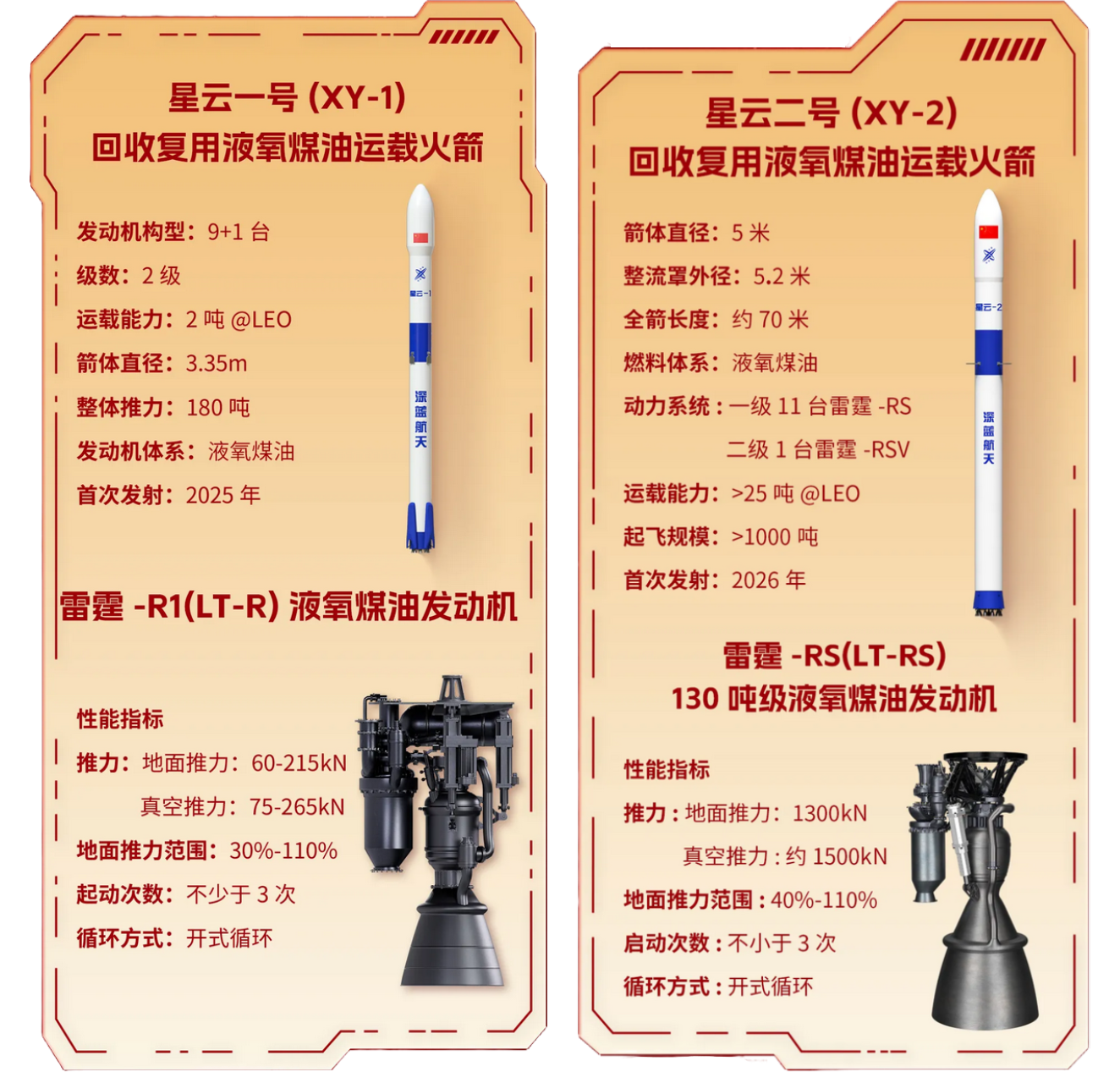Deep Blue Aerospace Prepares for Monumental Year
2025 is shaping up to be the year Nebula-1 reaches orbit and lands!
Deep Blue Aerospace spent last year conducting a series of tests for its reusable launch vehicles, which are now preparing to fly into orbit for the first time. Ahead of this year’s first flight of Nebula-1, Deep Blue has released a recap of 2024, along with the video embedded below.
Recap of 2024
January: Deep Blue conducted a gimbal test of its open-cycle Thunder-R engine, verifying the system, its stability and reliability, as well as its designed limits.
March: Three Thunder-R engines were tested in parallel for a static fire, with the Nebula-1 VTVL test vehicle, to verify the vehicle could structurally withstand the thrust of the engines.
April: Another static fire using three Thunder-R engines was conducted, this time running for 200 seconds verifying that the engines could run longer than the planned first-stage ascent burn. A test of the pusher system that will be used to help separate the first and second stages was also conducted during the month.
May: A test of Nebula-1’s landing legs was performed in May to verify the deployment and locking mechanisms.
July: Deep Blue performed a deployment test for its grid fin to verify its deployment and locking mechanism. Yet another three-engine static fire was also conducted to demonstrate various firings across a variety of thrust levels for a duration of 180 seconds.
August: Deep Blue’s Ejin Banner facility was completed ahead of Nebula-1 test hops, and possibly ahead of orbital launch missions.
September: An almost entirely successful hop test using the Nebula-1 VTVL test vehicle was performed in September, completing ten out of eleven test criteria. That hop test flew as planned until stopping 0.5 meters too high before softly touching down.
October: A Thunder-RS engine’s gas generator was tested to verify its combustion efficiency, stability, vibration, and propellant mixture uniformity.
November: The Thunder-RS saw another test in November, this time with a partially assembled engine to verify its start-up and shut down in a short test.
December: A second Nebula-1 VTVL test vehicle was delivered to Deep Blue’s facility in the Ejin Banner region, ahead of a repeat of September’s test or a near-space hop.
Deep Blue’s rockets
Nebula-1 is Deep Blue’s first launch vehicle set to be capable of carrying 2,000 kilograms to low Earth orbit, with a first flight planned for 2025. The vehicle utilizes a two-stage design, with a diameter of 3.35 meters (believed fairing diameter of 3.5 meters), using nine Thunder-R engines on the first-stage and a single Thunder-R engine on the second-stage. The Thunder-R engine burns rocket-grade kerosene and liquid oxygen and uses an open-cycle engine combustion cycle with a sea level thrust of 22 tons and a vacuum thrust of 27 tons, the engine can also be throttled between 30% and 110% along with being lit three times per flight. Nebula-1’s boosters will land downrange from the launch site, guided by four grid fins, using four landing legs to softly touchdown on a landing pad.
Nebula-2 is Deep Blue’s larger launch vehicle, standing at 70 meters tall, and planned to be capable of carrying up to 25,000 kilograms to low Earth orbit, with a debut mission expected in 2026. Like Nebula-1, the vehicle utilizes a two-stage design, this time with a diameter of 5 meters (fairing diameter of 5.2 meters), using eleven Thunder-RS engines on the the first-stage and one vacuum-optimized Thunder-RS on the second-stage. Each Thunder-RS engine is set to burn rocket-grade kerosene and liquid oxygen to generate 132.5 tons of thrust at sea level and 153 tons of thrust in a vacuum, while being lit three times per flight and throttling between 40% and 110%. Nebula-2’s boosters will land downrange and possibly back at the launch site, also guided by four grid fins, while being caught by a recovery tower.
Deep Blue is also working on a suborbital tourist vehicle partly based on Nebula-1, to carry six people or 1,200 kilograms above the Kármán line. Details for the vehicle have its crew capsule at 4 meters tall and 3.5 meters in diameter while weighing approximately 7,900 kilograms atop of a booster, which will be based on Nebula-1’s first-stage. Testing of the vehicle is planned to begin in 2026 ahead of the first crewed mission in 2027.
What to expect in 2025
In the coming weeks, Deep Blue is expected to conduct a second hop test using the Nebula-1 VTVL test vehicle to demonstrate the technology needed for a first-stage landing. A near-space hop may also follow if this is successful. The second hop was previously expected in November but was delayed due to unknown issues.
Within the first quarter of 2025 (January to March), Nebula-1 is expected to perform its maiden launch attempt, aiming to reach orbit and possibly a first-stage landing. Deep Blue is confident in the first flight, with the company stating the following at the end of its blog post:
“2024 was a critical year for Deep Blue Aerospace to tackle technological challenges and also a year to accumulate strength for the first flight of Nebula-1. We firmly believe that the goal of the first flight is no longer far away. Looking to the future, Deep Blue Aerospace will continue to forge ahead, meet the important moment of the first flight of Nebula-1 with greater enthusiasm and firm belief, and do its utmost to contribute to the development of the country’s commercial aerospace industry.”
If there are any problems with this translation please reach out and correct me.
If Nebula-1 successfully performs its maiden flight in quarter one, Deep Blue would be the third privately held Chinese launch company to reach orbit with a liquid-fuelled rocket, behind Space Pioneer with Tianlong-2 and LandSpace with Zhuque-2. Should Nebula-1 attempt a booster landing and be successful the company would achieve China’s first orbital-class booster landing, and the second in the world.
It is unknown how many Nebula-1 vehicles are planned to fly this year, but based on how fast Deep Blue prepared a second hop test vehicle it is likely a second launch may take place. Work is also underway to increase Nebula-1’s payload capacity from 2,000 to 8,000 kilograms.
While Nebula-1 is flying, Nebula-2 will be going through development. This will include complete engine testing as well as static fires of the first-stage, a nine-engine static fire may take place at a commercial test facility before the vehicle reaches the launch pad. Propellant tanks will also undergo testing due to their massive increase in internal volume.







